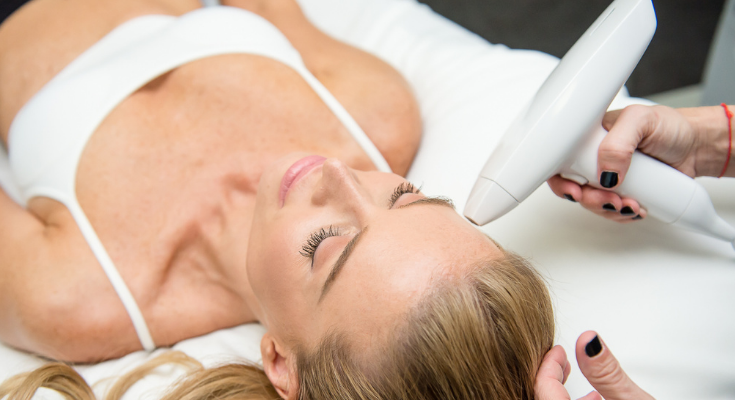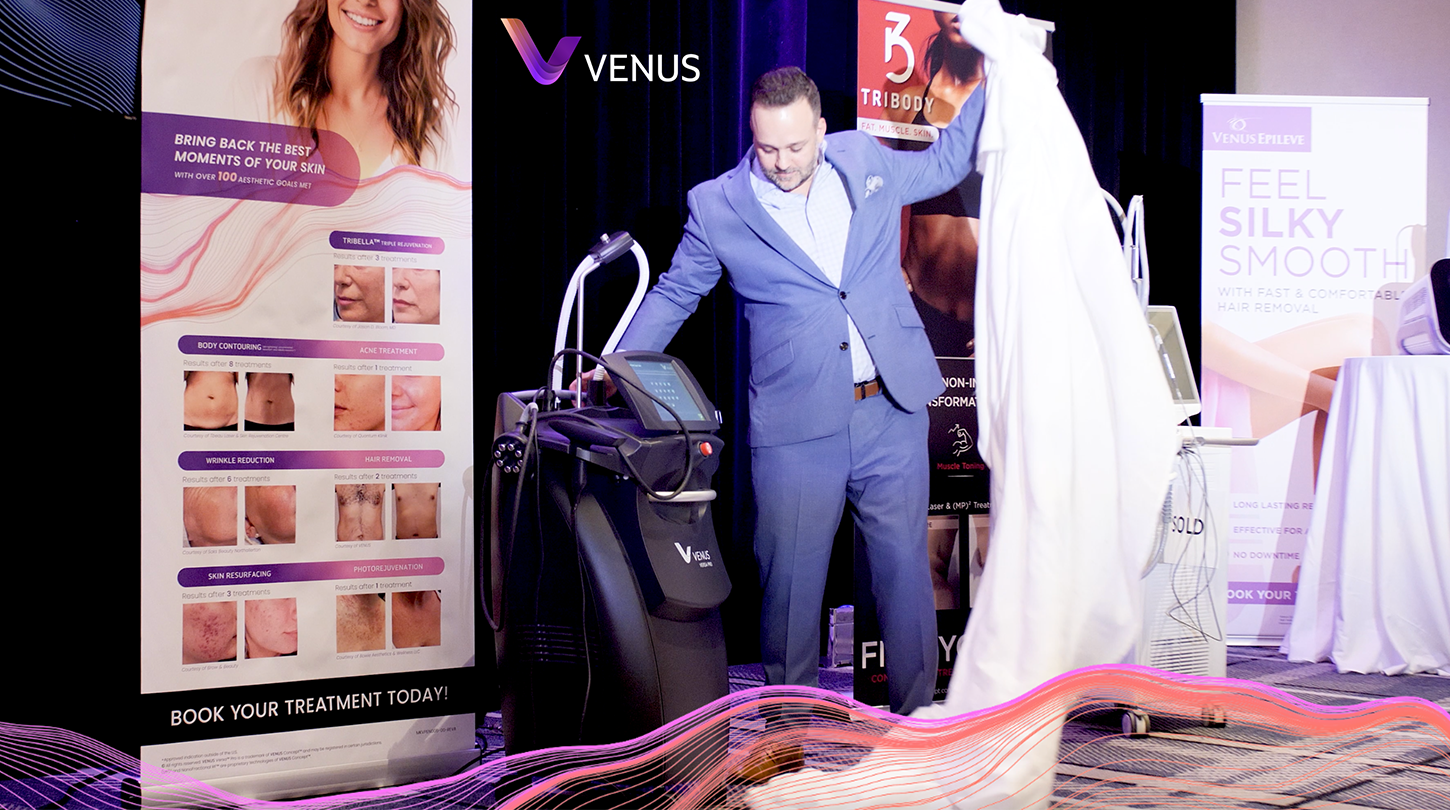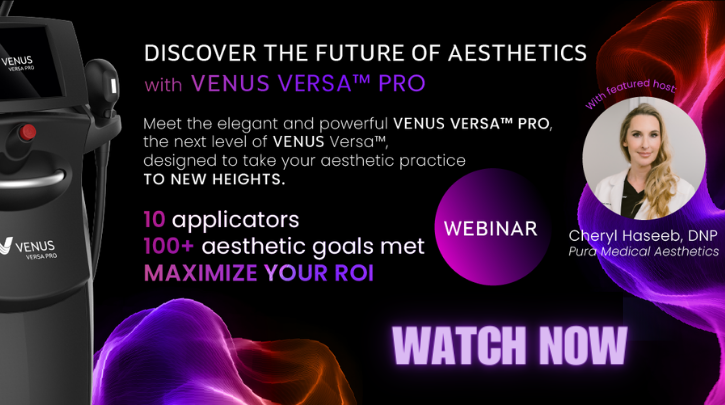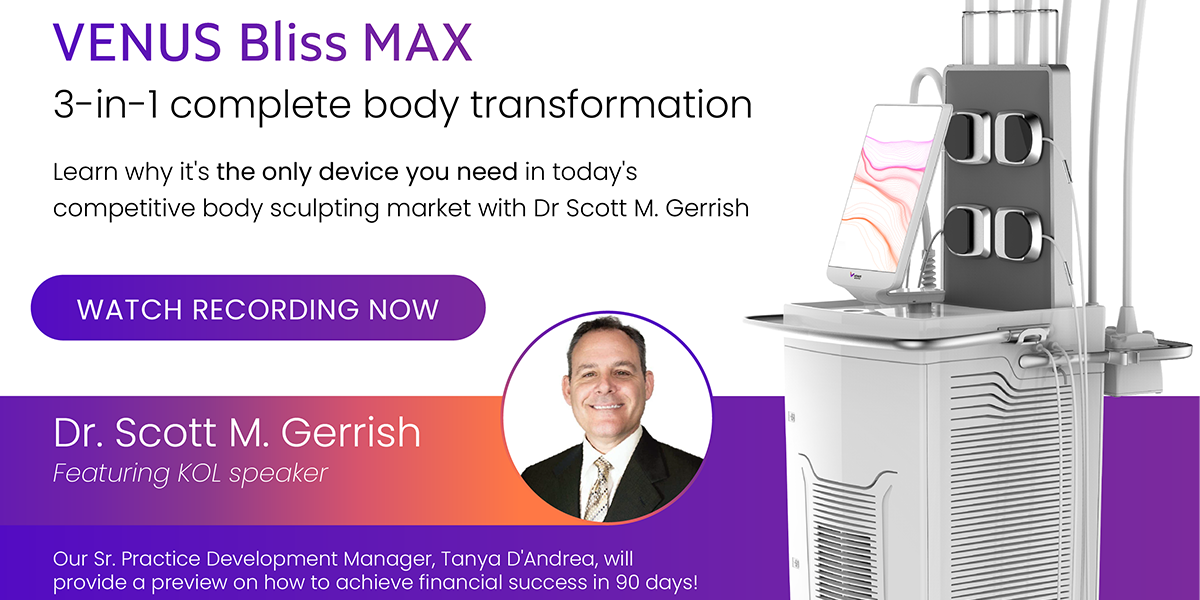Fractional RF Skin Resurfacing Vs. RF Microneedling

Skin resurfacing treatments can produce amazing results, shown to be successful at treating a variety of skin concerns, including fine lines, wrinkles, acne scars, rosacea, stretch marks, enlarged pores, uneven texture, and other skin imperfections. There’s lots of room for growth with these treatments. Over 70% of consumers report feeling somewhat to extremely bothered by their imperfect skin texture and/or discoloration, according to a recent consumer survey by the American Society for Dermatologic Surgery (ASDS).
Although there are many techniques options when it comes to skin resurfacing. Modern skin resurfacing technologies may offer patients lower downtime or less invasive treatments. The two key contenders in this area are fractional RF resurfacing and RF microneedling. The components of the two treatments might sound similar, however, they do very different things. This article aims to answer one commonly-asked question, is fractional skin resurfacing the same as RF microneedling? If not, what is the difference between the two?
What is Skin Resurfacing?
Skin resurfacing is a general term for treatments that damage the skin in a controlled way, encouraging the body’s natural healing process to repair the damage, and minimizing the appearance of a variety of skin-related concerns. Skin resurfacing typically induces two kinds of reactions in the skin.
Ablation Vs. Coagulation
Thermal energy over 100 degrees Celsius is needed for ablation to occur in the superficial layer of the skin. When energy is quickly applied to an area of skin, it vaporizes a section of skin. This takes some time to repair, but the length of time needed depends on how the ablation is done, and how much tissue is damaged. When the entire epidermal layer on the face is ablated, this translates into a treatment that is painful and requires long, uncomfortable downtime. It also has a risk of infection and post-inflammatory hyper/hypopigmentation (PIH). Ablative technologies include CO 2 lasers, Er:YAG, and plasma.
Another effect of the injury created in the skin during skin resurfacing is coagulation. Some technologies do not induce ablation and only induce coagulation. Technologies that only induce coagulation include fractional non-ablative lasers, radio frequency, and HIFU. This process heats deeper layers of the skin to stimulate neocollagenesis, rejuvenating the collagen fibers.
RF Microneedling
So where does RF microneedling fall within the spectrum of skin resurfacing technologies? To understand the advancements into RF microneedling, let’s refresh on how traditional microneedling works. Tiny needles penetrate the skin, creating microdermal wounds at varying depths of the skin. The number of wounds created depends on the device and how many times it passes over the same area. These micro-injuries stimulate the body’s healing response, however this does not stimulate the ablation or coagulation process, it is simply creating mechanical wound to the skin to trigger the healing process. The procedure does have a few significant drawbacks for patients. For one thing, the recovery time can be several days to a week, due to the large opening at the stratum corneum, and it can be quite painful. It also has a risk of infection.
With the addition of radiofrequency energy, microneedles can create heat in the skin that they are penetrating, creating coagulation in the tissue. The only effect on the outmost layer of the epidermis is puncture wounds. Without the effect of the renewed skin, it is unable to achieve the same results on the superficial skin as fractional RF technologies.
Fractional RF Technologies
Fractional RF systems induce both ablation and coagulation. Small pins sit on the surface of the skin and emit radio frequency energy into the epidermis. The radio frequency energy creates heat in the skin and simultaneously ablates tiny channels of the epidermis while creating coagulation around the tiny ablated channels, stimulating a wound-healing response. All of this is done fractionally (in tiny pin-points), having great effects but not requiring a long time for the skin to heal.
Ablation and coagulation have a combined effect on the skin. New skin grows in the wounded micro-channels while fibroblasts are creating new collagen and elastin fibers to heal wounded tissue. The new skin gives a refreshed appearance to the skin overall, and subsequent treatments with appropriate maintenance give excellent, long-term results, comparable to those of any other skin resurfacing method.
NanoFractional RF is appropriate for nearly any skin type and tone. Energy is delivered in tiny areas, which lowers the risk of PIH, and it is an energy that creates heat in the skin due to friction, not because it is absorbed by melanin. The number of treatments needed will depend on how well the patient responds to the treatment and the severity of the skin issues to be addressed. There is little or no discomfort after the procedure and patients typically return to regular activities within a day. It’s no wonder that micro-ablative skin resurfacing was the number one fastest growing non-surgical procedure in 2017. Because of its success in dealing with the most common skin concerns, this skin resurfacing treatment is a valuable commodity to have as part of your clinic offerings.
NanoFractional RF™ Resurfacing
Our NanoFractional RF™ skin resurfacing treatments allow for complete manual control of ablation and coagulation by adjusting power and pulse duration. Energy is distributed through a small footprint per pin (160 x 38 µm 2 ) at variable energy densities in a single tip, reducing the risk of post-inflammatory hyperpigmentation (PIH) and leaving sufficient intact tissue in between ablated micro-channels, for faster wound healing, uniform post-treatment tissue appearance, and low downtime. The energy delivered via the tiny pins on each tip directly ablate micro-channels of skin to trigger the skin’s natural healing process. SmartScan™ technology uses a unique algorithm to deliver energy in a randomized pattern, allowing for a homogeneous energy delivery, and a safe, more comfortable treatment. Treatments with NanoFractional RF™ technology can effectively reduce the appearance of acne scars and other scars, striae, rosacea, dyschromia, deep wrinkles, enlarged pores, and uneven skin texture and pigmentation for all skin types.
Optimizing Patient Satisfaction with Venus Viva™ MD And Venus Versa™
Venus Concept offers two devices that perform NanoFractional RF™ skin resurfacing: Venus Viva ™ MD and Venus Versa ™. Both utilize the same advanced technology, offering complete control of ablation, coagulation, and resurfacing with customizable parameters for specific outcomes.
The Venus Viva ™ MD skin resurfacing treatment is a favorite among clinicians for its great clinical outcome; it’s compact and ergonomic, the device is very quiet, and it has two tip options (160 pin and 80 pin) for greater customization to patients’ skin conditions. This light, table-top device can replace all other skin resurfacing systems. The SmartScan™ technology on its NanoFractional RF™ applicator allows for randomized and homogenous delivery of energy that makes for a comfortable and effective treatment.
Venus Versa ™ features the same advances in technology and applicators, but incorporates several other highly in-demand treatments because of its multi-platform adaptability. Select from ten different applicators to offer a variety of treatments from one workstation. Venus Versa™ offers several in-demand treatments including photorejuvenation, acne reduction, hair removal, and other procedures in addition to skin resurfacing. Because of its versatility, this multi-platform device is is capable of enabling a high return on investment.
Find out more about the benefits of adding advanced skin resurfacing treatments to your practice by contacting us today:

Why Venus
Body Devices
Body Treatments
Face & Skin Devices
Face & Skin Treatments
Hair Restoration Devices
Hair Removal Devices
Legal
For more information call: (888) 907-0115 // info@venusconcept.com // 235 Yorkland Blvd., Suite 900, Toronto, ON, M2J 4Y8 Canada
For more information call: (888) 907-0115 // info@venusconcept.com // 235 Yorkland Blvd., Suite 900, Toronto, ON M2J 4T8 Canada






